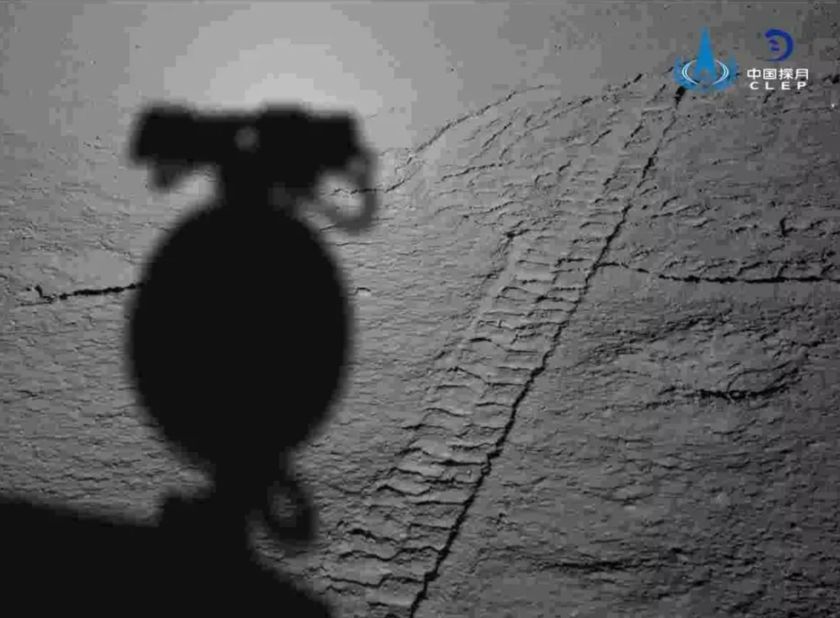When President John F. Kennedy gave his famous “We choose to go to the moon” speech in 1962, it kicked off a decade of moon madness culminating in the landing of Apollo 11 on the lunar surface in 1969. Public excitement in lunar exploration was at an all-time high, but interest in our planet’s natural satellite waned through the 1970s, with little public appetite for more travel to the moon.
Until recently, that is. The last few years, and this year in particular, have seen a burst of enthusiasm for learning more about the moon and for getting humans back there for the first time in 50 years. Here’s a quick recap of the most exciting moon milestones, discoveries, and experiments that happened in 2020.
8. Shooting lasers reveals wobbles
Since the 1960s, lunar missions have been leaving small devices called reflectors on the moon that can reflect laser beams. Scientists have been firing lasers toward the moon and trying to hit these reflectors for decades, in order to be able to accurately measure the exact distance from Earth to the moon and to see how far it is moving. But this is no easy feat: NASA says it’s trying to hit a target the size of a paperback novel from 240,000 miles away.

This year, for the first time ever, scientists from NASA and the Université Côte d’Azur in France hit a target and received a signal back from the reflector mounted on the Lunar Reconnaissance Orbiter (LRO). They found that the moon and Earth are drifting apart at a rate of around 3.8 centimeters per year, due to the gravitational interactions between the two. Monitoring these measurements over many years can also reveal information about the moon’s interior, like how its slight wobbles reveal it has a fluid core.
7. Growing food and making oxygen
If we’re hoping to set up a long-term base on the moon, we’re going to need to find a way to provide for astronauts’ essential needs. Recent experiments have come up with some truly creative ways to do this.
Researchers at the European Space Agency (ESA) came up with a method for taking tricky moon dust and turning it into oxygen. The dust is around 40% to 50% oxygen by weight, and it should be possible to access this oxygen using a technique called molten salt electrolysis. This involves putting the dust into a basket with chloride salt and heating it up, then zapping it with an electric current. Hey, presto: Oxygen.
Another challenge is growing food. Plants behave strangely in low-gravity environments, and researchers still aren’t quite sure why. But there’s been success getting certain crops to grow in the International Space Station (ISS), and researchers are working on systems for growing vegetables in low-gravity environments like the moon as well.
6. A robotic lunar explorer
Before we send humans to stay there, we’ll want robot helpers to explore the lunar environment and locate key resources. That’s why NASA is developing VIPER, a moon rover to traverse the moon and search for water. But you can’t just duplicate a rover like the ones sent to Mars and send it off to the moon.

The moon has its own challenges — specifically, lunar dust, which is sharp as glass and sticks to everything — so the engineers are working on new systems like seals for the electric motors to keep the corrosive dust out, and hefty paddle-like wheels that can drift through piles of fluffy dust.
The plan is for VIPER to begin exploring the moon in 2023.
5. Bombarded by radiation
We’re very lucky here on Earth: Our planet has a magnetic field called a magnetosphere that protects us from deadly cosmic radiation. But when you travel outside of this protective bubble, you’re suddenly bombarded with this radiation, which can affect both electric systems and human health. The moon has its own mini magnetosphere, which may even have protected the Earth and allowed life on this planet to flourish. But still, astronauts who travel to the moon will be hit with radiation.
Exposure of astronauts to radiation was measured during the Apollo missions, but this measurement spanned across their journey from Earth, around the moon, and back again. The exact levels of radiation on the moon remained an unknown.
Until this year, that is. Data from China’s Chang’e 4 lander was used to measure radiation levels on the moon for the first time. The levels are around 200 times those on Earth, which, while not great news, is still within acceptable parameters of risk for astronauts.
4. Artemis mission gears up
NASA’s Artemis mission aims to get astronauts back to the moon by 2024. While that date seems rather optimistic, the agency is charging full speed ahead with getting a crew back to the moon — including the first woman on the moon.

NASA recently announced its Artemis Team of 18 astronauts who will begin preparing for a moon mission, and from whom the next humans to walk on the moon will be selected. The agency is also working on a new Artemis rocket to carry the astronauts on their journey.
3. NASA wants to build a moonbase
NASA has been announcing its intentions to send astronauts back to the moon for some time — but this time, it doesn’t just want to visit for a few hours or a few days. It actually wants to set up a long-term base there for astronauts to stay for periods of over a month.
Building a moonbase will be a tremendous challenge, from coming up with a habitat to providing for the astronauts’ needs to dealing with all that pesky moon dust. But NASA has laid out its plans in a report published earlier this year, and they’re quite ambitious. The agency has said that it wants to make annual trips to the moon every year from 2021 until 2030. The initial efforts would be uncrewed,
2. A new sample of moon rock
NASA isn’t the only space agency interested in the moon. China has also been doing groundbreaking lunar missions in recent years, like sending its Chang’e 4 lander to the far side of the moon last year. But this year, the China National Space Administration (CNSA) achieved something truly spectacular: Its Chang’e 5 mission scooped up a sample of moon rock and brought it back to Earth for the first time in over 40 years.

This particular sample of rock and dust comes from a different region than previous samples were collected from, where the rocks are thought to be much younger. So studying the samples will help scientists understand how the moon has evolved over time, and how radiation has affected its surface.
1. There’s water there
Debate has raged for years about whether there is water on the moon, with suggestions it could exist in tiny amounts or in icy craters near the poles. But this year ,a study using NASA’s flying observatory, the Stratospheric Observatory for Infrared Astronomy (SOFIA), settled the question once and for all: There is water on the moon’s sunlit surface.
The researchers said they found the equivalent of a 12-ounce bottle of water in a cubic meter of soil spread over the surface. There could even be water across the entire lunar surface.
Where this water came from and how it persists in the lunar environment is a matter of scientific interest. But more importantly, it is an invaluable resource for potential human exploration of the moon.
Editors' Recommendations
- Why are we going to the moon again? NASA astronaut Kjell Lindgren explains
- Martian dust is a big problem for astronauts. Here’s how NASA fights it
- The time we almost nuked the moon
- CES has never been great for women. Is 2020 the year that changes?




